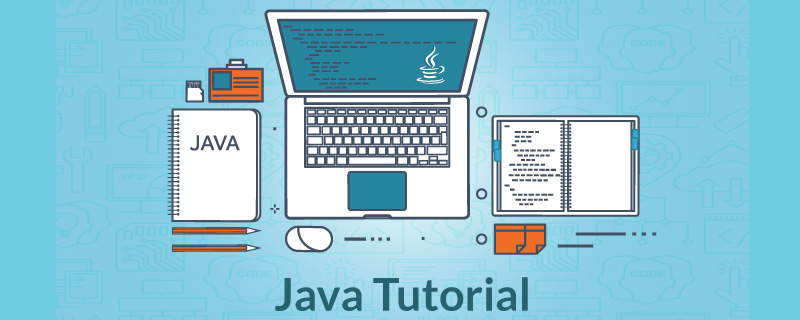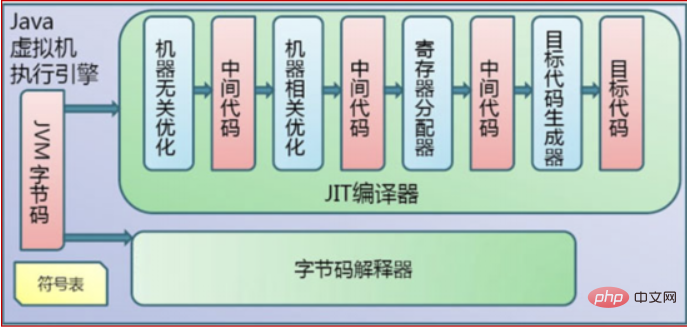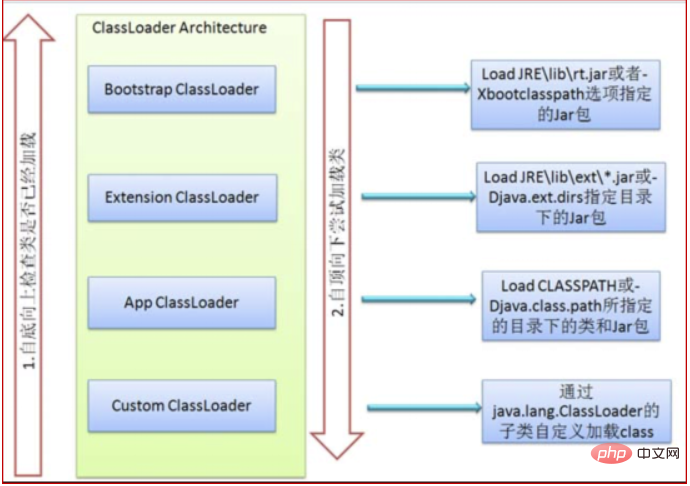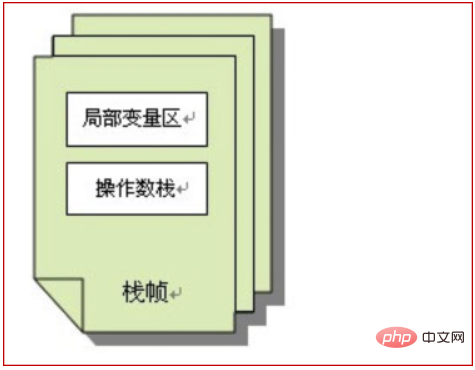What is the compilation order of java code
java code compilation sequence: first the source code enters the lexical analyzer, and then the token stream enters the syntax analyzer; then the abstract syntax tree is processed and then the semantic analyzer is performed; then the abstract syntax tree is annotated and generated using bytecode processor; finally generates jvm bytecode.

Java code compilation sequence:
Java code compilation is completed by the Java source code compiler. The flow chart is as follows:

The execution of Java bytecode is completed by the JVM execution engine. The flow chart is as follows:

The entire process of Java code compilation and execution includes the following three important mechanisms: 1) Java source code compilation mechanism; 2) Class loading mechanism; 3) Class execution mechanism
Among them, Java source code compilation consists of the following three processes: 1) analysis and input to the symbol table; 2) annotation processing; 3) semantic analysis and generation of class files
The flow chart is as follows:

The finally generated class file consists of the following parts:
1) Structural information. Includes class file format version number and information on the number and size of each part.
2) Metadata. Corresponds to information about declarations and constants in Java source code. Contains declaration information of classes, inherited superclasses, implemented interfaces, domain and method declaration information, and constant pools.
3) Method information. Corresponds to the information corresponding to statements and expressions in Java source code. Contains bytecode, exception handler table, evaluation stack and local variable area size, evaluation stack type record, and debugging symbol information.
Class loading mechanism
JVM class loading is completed through ClassLoader and its subclasses. The hierarchical relationship and loading order of the classes are as shown in the figure below:

1) BootStrap ClassLoader
is responsible for loading all classes in the jre/lib/rt.jar package in $JAVA_HOME. It is implemented by C and is not a ClassLoader subclass
2) Extension ClassLoader
is responsible for loading some jar packages for extension functions in the Java platform, including jars in the directory specified by jre/lib/*.jar or -Djava.ext.dirs in $JAVA_HOME Bag.
3) App ClassLoader
is responsible for recording the jar package specified in the classpath and the class in the directory
4) Custom ClassLoader
belongs to the application according to its own needs Customized ClassLoaders, such as tomcat and jboss, will implement ClassLoader according to j2ee specifications.
During the loading process, it will first check whether the class has been loaded. The checking order is from bottom to top, from Custom ClassLoader to BootStrap. ClassLoader checks layer by layer. As long as a certain classloader has been loaded, the class is considered loaded, ensuring that this class is only loaded once. The loading order is from top to bottom.
Class execution mechanism
JVM is based on the stack architecture to execute class bytecode. After a thread is created, a program counter (PC) and a stack (Stack) will be generated. The program counter stores the next instruction to be executed. Each stack frame is stored in the stack. Each stack frame corresponds to each call of each method. The stack frame is composed of two parts: the local variable area and the operand stack. The local variable area is used to store local variables in the method. and parameters, the operand stack is used to store intermediate results generated during method execution. The structure of the stack is as follows:

Related free learning recommendations: java basic tutorial
The above is the detailed content of What is the compilation order of java code. For more information, please follow other related articles on the PHP Chinese website!

Hot AI Tools

Undresser.AI Undress
AI-powered app for creating realistic nude photos

AI Clothes Remover
Online AI tool for removing clothes from photos.

Undress AI Tool
Undress images for free

Clothoff.io
AI clothes remover

Video Face Swap
Swap faces in any video effortlessly with our completely free AI face swap tool!

Hot Article

Hot Tools

Notepad++7.3.1
Easy-to-use and free code editor

SublimeText3 Chinese version
Chinese version, very easy to use

Zend Studio 13.0.1
Powerful PHP integrated development environment

Dreamweaver CS6
Visual web development tools

SublimeText3 Mac version
God-level code editing software (SublimeText3)

Hot Topics
 Break or return from Java 8 stream forEach?
Feb 07, 2025 pm 12:09 PM
Break or return from Java 8 stream forEach?
Feb 07, 2025 pm 12:09 PM
Java 8 introduces the Stream API, providing a powerful and expressive way to process data collections. However, a common question when using Stream is: How to break or return from a forEach operation? Traditional loops allow for early interruption or return, but Stream's forEach method does not directly support this method. This article will explain the reasons and explore alternative methods for implementing premature termination in Stream processing systems. Further reading: Java Stream API improvements Understand Stream forEach The forEach method is a terminal operation that performs one operation on each element in the Stream. Its design intention is
 PHP: A Key Language for Web Development
Apr 13, 2025 am 12:08 AM
PHP: A Key Language for Web Development
Apr 13, 2025 am 12:08 AM
PHP is a scripting language widely used on the server side, especially suitable for web development. 1.PHP can embed HTML, process HTTP requests and responses, and supports a variety of databases. 2.PHP is used to generate dynamic web content, process form data, access databases, etc., with strong community support and open source resources. 3. PHP is an interpreted language, and the execution process includes lexical analysis, grammatical analysis, compilation and execution. 4.PHP can be combined with MySQL for advanced applications such as user registration systems. 5. When debugging PHP, you can use functions such as error_reporting() and var_dump(). 6. Optimize PHP code to use caching mechanisms, optimize database queries and use built-in functions. 7
 PHP vs. Python: Understanding the Differences
Apr 11, 2025 am 12:15 AM
PHP vs. Python: Understanding the Differences
Apr 11, 2025 am 12:15 AM
PHP and Python each have their own advantages, and the choice should be based on project requirements. 1.PHP is suitable for web development, with simple syntax and high execution efficiency. 2. Python is suitable for data science and machine learning, with concise syntax and rich libraries.
 Java Program to Find the Volume of Capsule
Feb 07, 2025 am 11:37 AM
Java Program to Find the Volume of Capsule
Feb 07, 2025 am 11:37 AM
Capsules are three-dimensional geometric figures, composed of a cylinder and a hemisphere at both ends. The volume of the capsule can be calculated by adding the volume of the cylinder and the volume of the hemisphere at both ends. This tutorial will discuss how to calculate the volume of a given capsule in Java using different methods. Capsule volume formula The formula for capsule volume is as follows: Capsule volume = Cylindrical volume Volume Two hemisphere volume in, r: The radius of the hemisphere. h: The height of the cylinder (excluding the hemisphere). Example 1 enter Radius = 5 units Height = 10 units Output Volume = 1570.8 cubic units explain Calculate volume using formula: Volume = π × r2 × h (4
 PHP vs. Other Languages: A Comparison
Apr 13, 2025 am 12:19 AM
PHP vs. Other Languages: A Comparison
Apr 13, 2025 am 12:19 AM
PHP is suitable for web development, especially in rapid development and processing dynamic content, but is not good at data science and enterprise-level applications. Compared with Python, PHP has more advantages in web development, but is not as good as Python in the field of data science; compared with Java, PHP performs worse in enterprise-level applications, but is more flexible in web development; compared with JavaScript, PHP is more concise in back-end development, but is not as good as JavaScript in front-end development.
 PHP vs. Python: Core Features and Functionality
Apr 13, 2025 am 12:16 AM
PHP vs. Python: Core Features and Functionality
Apr 13, 2025 am 12:16 AM
PHP and Python each have their own advantages and are suitable for different scenarios. 1.PHP is suitable for web development and provides built-in web servers and rich function libraries. 2. Python is suitable for data science and machine learning, with concise syntax and a powerful standard library. When choosing, it should be decided based on project requirements.
 Create the Future: Java Programming for Absolute Beginners
Oct 13, 2024 pm 01:32 PM
Create the Future: Java Programming for Absolute Beginners
Oct 13, 2024 pm 01:32 PM
Java is a popular programming language that can be learned by both beginners and experienced developers. This tutorial starts with basic concepts and progresses through advanced topics. After installing the Java Development Kit, you can practice programming by creating a simple "Hello, World!" program. After you understand the code, use the command prompt to compile and run the program, and "Hello, World!" will be output on the console. Learning Java starts your programming journey, and as your mastery deepens, you can create more complex applications.
 How to Run Your First Spring Boot Application in Spring Tool Suite?
Feb 07, 2025 pm 12:11 PM
How to Run Your First Spring Boot Application in Spring Tool Suite?
Feb 07, 2025 pm 12:11 PM
Spring Boot simplifies the creation of robust, scalable, and production-ready Java applications, revolutionizing Java development. Its "convention over configuration" approach, inherent to the Spring ecosystem, minimizes manual setup, allo






